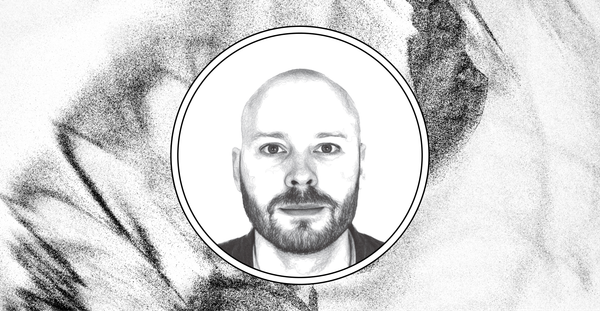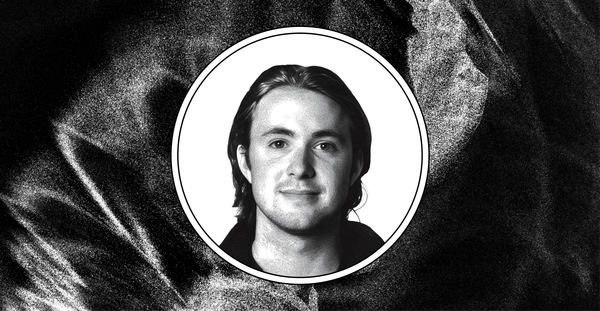Turning the Desert into an Oasis with Rainmaker’s Augustus Doricko
Augustus Doricko is the founder of Rainmaker, a cloud seeding geoengineering startup that aims to create water abundance in the United States.
Augustus Doricko is the founder of Rainmaker, a cloud seeding geoengineering startup that aims to create water abundance in the United States.
.jpg)
What led you to found Rainmaker?
Augustus: I’m a practicing Christian and I think that God designs man with an intended function in general and in the abstract. I think there is a specific vocation or set of vocations that a given man or woman is intended to work on. I think that God has just opened up a series of doors that has led to me working on this thing that I never thought I would be working on before. If you had told me three years ago that you’re gonna be the water tech guy I wouldn’t have believed you. I wouldn’t have known what that could have possibly meant.
But practically how I got here is over the pandemic I was living with my family in Texas and studying physics and data science at Berkeley. School was online and I met the biggest water well driller in the state of Texas because we worked out at the same gym—a great common thread in my life is definitely the gym—and we became good friends. He told me one day, “You know, Augustus, there’s all these reports and permits that we have to file and it’s a real pain in my rear end.” So I asked him, “You’re putting holes in the ground…Why are you doing all this paperwork? Why are we reporting on groundwater consumption?”
Turns out that with a few rare exceptions, every aquifer in the western United States is in a state of managed depletion, which means we’re slowing down the rate at which it is being depleted. But at the current rate, it’s still going to be empty and causing Dust Bowl-type events between 2040 and 2080. The response has been to impose a Malthusian or penalty-based regulatory regime on a state-by-state municipal basis where you’re given an allocation and if you exceed that allocation for the year of how much groundwater you can pump you’re penalized pretty severely. So that’s what this reporting was and it’s a pretty rote process. So I asked him, “Why are you doing it by hand rather than automating it?” It was a pretty classic Silicon Valley kid meets legacy industry guy. So I dropped out of college to build Terra Seco Solutions with him and spent two years working on it. We ended up expanding throughout the US, but were mostly operating in Texas. I gradually transitioned over the course of those two years from being the software guy to becoming more of like a BD and water policy guy at the company.
How did your work on water policy at Terra Seco influence your decision to work on cloud seeding?
What I found over the course of working there was basically only two viable positions on water policy. It was either: let’s desalinate the entire Pacific Ocean and pump it up the mountains into the country, or stop using water. The actual policy of many states is to reduce the amount of agricultural land in the state by hundreds of thousands or millions of acres, which is going to be catastrophic for the state economy in general, for food prices, and for people’s well being. They’re limiting the construction of houses in some cases due to water availability. That was just a totally dissatisfactory dialectic to me.
So I searched out alternatives to desalination for producing water because there are some practical limitations around where you can do that and when it’s economically viable. I found cloud seeding, which was super sci-fi and had a real sort of spiritedness like nuclear energy and space travel. Cloud seeding seems like the best way to produce more water to prevent decline and stagnation. I see no alternative path. So earlier this year I sold my interest in Terra Seco and decided to spin up Rainmaker. I’ve been working on it ever since.
What’s the state of technology in the cloud-seeding industry today?
Unfortunately, the state of the industry is the same as it was when we invented the technology in the 1950s. What we’ve done for decades is we first identify clouds that have the appropriate conditions to be seeded—meaning there’s the right combination of water vapor density, temperature, wind shear, and so on. Then you can either use a ground-based generator or an airplane to deliver the nucleation agent. The ground generator is a flare, essentially, that emits a plume of smoke of the nucleation agent, which then goes into the cloud. Theoretically what it’s supposed to do is either condense the water vapor in the cloud into big enough droplets so that they fall or catalyze the freezing of the water vapor in the cloud so that it forms ice crystals that are heavy enough to fall. The alternative option is to fly a plane up to the cloud and release the nucleation agent much closer to that water vapor.
There are several problems with these two delivery agents. First, in the case of the ground-based generator, you don’t need to model it out to realize that emitting a plume of smoke from the ground and hoping that it ends up where you want it at 20,000 feet is preposterous. The data has proven out that it doesn’t have a great effect, it’s a bad way to deliver the nucleation agent. Using a plane is more precise, but not precise enough. There’s no intelligence built into the plane’s path—it just flies around in a cloud spraying this nucleation agent willy nilly. Another problem is that it can take hours to get up there when you get the signal that there’s a good cloud for seeding. So you can miss the ideal window for seeding because you have to outfit the plane, get the pilot ready, get tower clearance to fly, and all this other stuff before you can get up there. So these are the problems with the two main delivery mechanisms.
Another problem is around the nucleation agent itself. Silver iodide is the default compound, but because it has silver in it that makes it exorbitantly expensive. It also only works below -30 degrees Celsius so it’s only viable during certain times of the year over certain geographies. So that’s the state of the industry that I was coming into.
Who buys cloud seeding services?
There are some private buyers of cloud seeding and there are some public ones. Ski resorts like Vail are an example of a private buyer. They pay for cloud seeding so that they get more snow on their slopes. On the public side, places like Pinal County in Arizona pay for cloud seeding to get more water in their watershed. The Sacramento Municipal Utility District also pays for cloud seeding over the Sierra Nevada to get more water into the Cal State Water Project. So there are these “mom and pop operations” that are operating and that’s fine, I’m glad they’re operating. But no one has really done this at scale and the yields haven’t mitigated the drought that we’re facing nationwide.
How is Rainmaker taking a different approach to cloud seeding?
There are three big verticals for us. The first is the software components. This is the most boring part, but it’s critical. We’re doing precision spatiotemporal modeling of the weather formations specifically for cloud seeding application. There’s tons of software that’s great at forecasting weather in general, but none of them use the data that’s relevant for cloud seeding to predict how much precipitation you’ll produce if you intervene in weather. So we’re building that. The next thing, which is more exciting, is drone-based delivery of the nucleation agent. So instead of using a plane, which is super expensive and flies around in a general pattern, we’re using this fancy software to identify precisely where in the cloud has the highest concentration of supercooled liquid water. We fly right to that—it only takes 12 minutes to ascend to the altitude that’s relevant for us so there’s really low latency to delivery. The drone is also built to handle the icing conditions in the cloud. A cloud that’s full of water below zero degrees is going to cause most things to fall out of the sky, but we’re outfitting our drone with heating elements so they can withstand these conditions. The final part is nucleation chemistry. The problem is nobody in the last 70 years has really considered why silver iodide is such a good nucleation agent.They can give a hand wavy answer, but we’re doing a much more rigorous study of alternative nucleation agents that are going to be more cost effective and higher yield relative to silver iodide.
When do you start testing?
We already have customer contracts and we’ll start in October.
Are you focused more on private or public customers?
Both are going to be relevant. But the nature of government contracts is that they take a long time. So we’re starting with large scale commercial farms and from that we will leapfrog up into contracts with municipal utilities, states, and then perhaps federal stuff with the Bureau of Land Management, DoD, or USDA.
How does a customer know the rain will fall on their land and they’re not just paying to water another farm?
Nobody before has tried to be as precise as we are trying to be. Usually it’s seeding for entire watersheds or counties. We’re going to be able to do tens of thousands or hundreds of thousands of acres instead. That’s still pretty big, but it’s significantly more precise than anything that’s ever been done before.
How long does it take to start raining once a cloud is seeded?
It’s generally 12 to 45 minutes.
We’ve mostly talked about causing it to rain when it otherwise wouldn’t. But could Rainmaker’s tech also be used to mitigate the fallout from hurricanes or lake-effect storms?
Weather modification is something that you can do to enhance precipitation and something that can mitigate severe weather events. A great example of this is from the 1960s and 1970s, when there was a US initiative called Project Stormfury where we basically bombed hurricanes over the Atlantic before they broke against the eastern seaboard. We bombed them not with explosives, but cloud seeding agents to mitigate their wind velocities and the amount of rain they’d produce when they did break against the shore.
People understandably get nervous when they hear about weather modification. What’s the steelman position for your critics?
There are a few relevant critiques. For one, you can cloud seed in an adverse way or in a net negative way for watersheds. This means that if there’s a cloud formation that’s bound to precipitate 20 miles east of where you are and you see it immediately overhead, you can prevent that water from getting 20 miles east. So you can move water around in a way that takes from one to give to the other. That’s a very practical concern. In water stressed areas like the southwest the notion of losing out on any precipitation whatsoever is terrifying. That’s a very real concern and the technology exists to do that. But I don’t want to engage in that and don’t plan to engage in that. Another complaint is that we do not have the capacity to model out the climatic effects of cloud seeding at scale. So then the question is: if you don’t know exactly what’s going to happen locally—you can model local effects decently well, but it’s not spectacular—what will be the second or third order effects? That’s also a valid concern in the same way that making decisions using climate modeling has been difficult for the past few decades.
So now I’ll address these concerns. First, there are a lot of ways that you can seed clouds that are either a purely additive to the water table or net additive. One purely additive way is to seed maritime cloud formations that blow in from the coast and then recede back over the ocean. That water vapor is barely used at all. A bit of the mist is absorbed by plants, but it’s not used productively by humans. Seeing those clouds is a great way to provide California more water without detracting from anybody in the interior. It could also potentially even offset the amount of water demand California has from the Colorado River.
Another thing that’s worth considering is that if you induce precipitation at the top of a watershed, you get more “turns on capital” of that water, so to speak. So if it rains over the Sierras rather than Sacramento, then everybody at the top of the watershed can use that water for irrigation or whatever. Then that water percolates back down in the aquifers or into the Sacramento River or American River and can then be recycled repeatedly. So that’s the sort of rearranging of water that allows more people to use it and that’s how we intend to do our cloud seeding. We intend for it to be an absolute benefit rather than just like a net benefit with some tradeoffs.
There’s also national security to consider. In the same way that AI is concerning to people because it can, in principle, be used for evil, it’s going to be developed whether you like it or not and I would much prefer that my country is the one responsible for controlling this technology, rather than other nations that may have interests that aren’t aligned with ours. And right now we’re decades behind on this technology relative to the UAE, the Saudis, and the Chinese. China is cloud seeding over the Gobi Desert, and they’re already producing more rainfall and terraforming this desert. In addition to that they’re supplementing the Yangtze River for hydroelectric and agricultural purposes, and they’re using drones to do it. They’re some of the most beefy, sophisticated drones that anybody’s produced for commercial, non-military applications. So the onus is not only on us to solve water scarcity and drought through terraforming, but also to keep America at the forefront of technological development that’s obviously going to be of critical importance in this century.
Finally, we’re at a fork in the road: One path ahead of us is certain and the other is uncertain. The certain path is one where we see the depopulation of the American West, where we see the agricultural base destroyed by lack of water, where we see a degradation in everyone’s quality of life west of the Mississippi. That is going to happen over the next couple of decades. It won’t be immediate, but it is going to happen. The alternative option, which is more uncertain, is that we dedicate some of our resources to water seeding and cast the dice in a way that may enable us to stop that stagnation and reverse that trend so that we can have a more abundant future with better quality of life for everybody involved.
HAUS specializes in public relations and creative services for deep tech startups.




